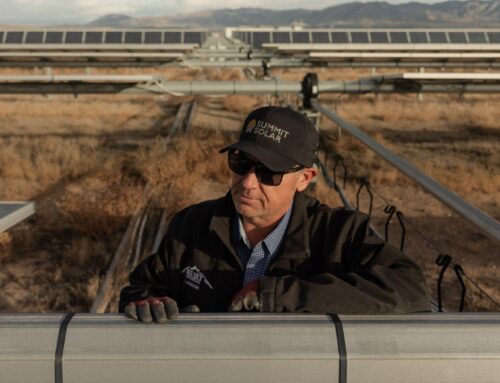Energy Crisis Grips Samoa
April 12, 2025
The South Pacific Island of Samoa has been facing an energy crisis as it plunged into darkness this month. Samoa continues to be highly dependent on fossil fuel imports to meet most of its energy needs, including power generation. Much of its power infrastructure is susceptible to severe weather and other challenges, which puts the country at risk of blackouts during cyclones. However, the recent energy emergency has demonstrated that the nation’s power infrastructure is even more vulnerable than previously thought, suggesting the need for greater investment in new transmission infrastructure and the rollout of more renewable energy capacity.
Samoa, or the Samoan Islands, is an archipelago in Polynesia, with a population of less than 220,000. In recent weeks, it has fallen into an energy crisis, with the country’s Prime Minister Fiame Naomi Mata’afa declaring a 30-day state of emergency at the beginning of April due to continued power outages across the islands. The power cuts have caused significant disruption to daily life and businesses, hitting the economy hard. Meanwhile, the withdrawal of aid for several Pacific Islands under the U.S. Trump administration will likely further hinder the region’s economic growth.
The government is racing to find alternative energy sources, with five temporary power generators expected to help provide short-term relief. The blackouts, which have significantly affected Samoa’s main island of Upolu, where the capital Apia is located, are affecting tourism, one of the islands’ main sources of income. While some major resorts have backup generators, smaller businesses have been left to suffer. In addition, hospitals, and schools have had to survive with intermittent power for several weeks.
Fiame said last week that the crisis could reduce the country’s gross domestic product by up to 16 percent this year because of the “severe disruptions” to public services and economic activity. Over 90 percent of businesses in Samoa have experienced regular outages, with 70 percent reporting disruptions several times a week, according to a March Samoa Chamber of Commerce and Industry survey. This has led to significant losses in revenue.
Samoans have grown used to the blackouts associated with severe weather events, but are less accustomed to the prolonged power outages that they have experienced in recent weeks. The crisis has been caused by several technical issues, which include the failure of key generators at the Fiaga power station on Upolu Island, a fault in a primary underground transmission cable, and widespread damage from a recent storm, coupled with the significant increase in power demand over the past two years. The government’s power provider the Electric Power Corporation (EPC) has been forced to carry out power rationing measures on Upolu since 26th March following the failure of three key generators.
While Upolu‘s power is expected to be recovered by the end of April, the country may face more blackouts over the coming months, with permanent generators not expected to be available until August. Meanwhile, those working in the power sector are racing to repair the broken cable lines. There have been significant spillover effects from the blackouts, with some of Samoa’s major manufacturers battling to fix key machinery that was damaged by power surges or unexpected outages.
The Samoan community spokesperson Tupa’imatuna FotuoSamoa Jackson said that more needs to be done to establish a reliable energy network in Samoa. “There is a significant impact on business … continued disruptions can have long-term impacts for many in our community,” explained Jackson. “While it’s welcome news that there is consideration for relief, such as importing generators, you need to think broader, not just relying on hydropower but incentivising other means of power generation nationally.”
The government of Samoa aims to achieve a 70 percent renewable energy share by 2031, as outlined in its Low Emissions Development Strategy 2021-2030. However, it is not clear whether Samoa will be able to achieve this goal given the current speed of renewable energy deployment.
In 2019, Samoa carried out two small hydro projects aimed at supplying 20 percent of the Island’s energy demand. One plant was built on Upolu and the other on Savai’i. The project was paused during the Covid-19 pandemic but, according to the EPC, the plants are expected to provide enough renewable energy to power Samoa wholly with green sources within the next seven years. The project has been supported by funding from donors, including the New Zealand Government, the European Union, and the Asian Development Bank.
While there are high hopes for the future of renewable energy in Samoa, the country’s current situation is less optimistic. Samoa is facing an energy emergency with no quick fix available. While temporary diesel generators are expected to provide short-term relief, greater funding is required to strengthen the country’s energy infrastructure and make it less vulnerable to severe weather and other challenges.
By Felicity Bradstock for Oilprice.com
More Top Reads From Oilprice.com
- Cautious Calm in Canada’s Oil Patch as Prices Slide
- U.S. Shale Faces Toughest Challenge Since the 2020 Oil Price Plunge
- Is Oil Demand About to Surge?
Search
RECENT PRESS RELEASES
Related Post




